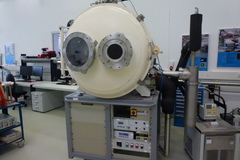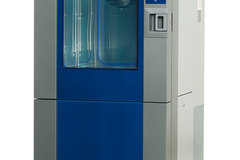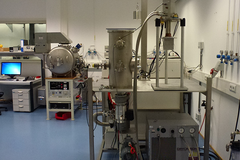We are a leading center in Poland that conducts design works and analyses using computational methods and techniques (Computational Fluid Dynamics, CFD). We employ high-class specialists in the field of numerical aerodynamics as well as the design and optimization of aircraft structures. In research and design work, we use both proprietary and commercial software.
We perform analyses covering issues such as:
• strength and mass optimization,
• fatigue wear,
• contact,
• friction,
• heat exchange,
• flows,
• vibrations.
Numerical and simulation analysis – design and optimization
Basic design and optimization tools developed and implemented internally:
• The methodology of parameterization of objects in terms of design and optimization of their aerodynamic properties,
• multi-criteria and multidisciplinary design and optimization methodology based on genetic algorithms and metamodels,
• experiment design methodology.
Basic scope of activity:
• construction of parametric models of objects for research and optimization (profile, wing, engine intake duct, engine exhaust nozzle, etc.),
• aerofoil profiles design,
• multi-criteria and multidisciplinary design of aircraft and its components,
• aerodynamic design of flow channels,
• aerodynamic design of the main rotor of the helicopter,
• design of propellers, wind turbine rotors, etc.
Strength and stiffness calculations – software
• LS-DYNA,
• ANSYS,
• FRANC2D i 3D,
• AFGROW,
• NASGRO,
• MSC PATRAN/NASTRAN,
• MSC MARC.
Basic scope of activity:
• static and dynamic loads on aircraft landing gear
• components and other structures;
• strength analyses:
• aviation parts,
• machines,
• vehicles;
• shimmy type vibration analyses;
• stiffness-strength analyses, susceptibility of components or entire aircraft landing gear and other structures (including composite);
• optimization and integration of components of aircraft landing gear and other structures, braking system, shock absorbers;
• phenomena accompanying the braking process (dynamics, thermal phenomena, vibrations);
• evaluation of durability of elements of aircraft landing gear and other structures by analytical and experimental methods;
• numerical analyses of energy-consumption of the materials;
• design and analysis of energy-intensive envelope structures (lattice structures) made by incremental methods (3D printing);
• numerical simulations of landing gear drop tests.
Flow analysis
For the computational simulation of flows, we use both proprietary, academic and commercial software.
Basic scope of activity:
• Simulations of aircraft flow (a)round) and its components;
• Simulations of the helicopter flow (a)round and its components and interference with the environment;
• non-stationary flows with time-varying geometry of the flow area;
• simulations of fully three-dimensional flow (a)round of a working helicopter main rotor (in progressive flight and in hover) based on the URANS solution;
• modeling of the interaction of the medium and rotor blades structure (blades oscillations and deformations);
• Simulations of flows in the ducts (e.g., in aircraft engine intake ducts).
The basic design and optimization tools are the following methodologies developed and implemented by us:
• methodology of parameterization of objects in terms of designing and optimizing their aerodynamic properties,
• multi-criteria and multidisciplinary design and optimization methodology based on genetic algorithms,
• experiment design methodology.
Noise analyses
We are developing technologies for the numerical and experimental evaluation of noise generated by aircraft components, such as propellers and rotors, airframe and landing gear mechanization systems, as well as noise generated by external factors in a specific territory. We are successively developing methods for identifying noise sources and optimizing structures to minimize it.
















